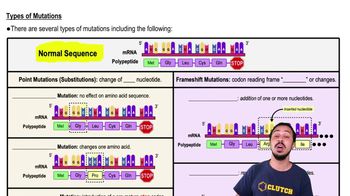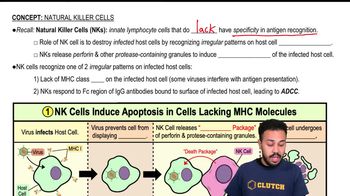Use the following choices to answer questions 7 and 8:
a. catabolite repression
b. DNA polymerase
c. induction
d. repression
e. translation
Mechanism by which the presence of glucose inhibits the lac operon.
 Verified step by step guidance
Verified step by step guidance



Use the following choices to answer questions 7 and 8:
a. catabolite repression
b. DNA polymerase
c. induction
d. repression
e. translation
Mechanism by which the presence of glucose inhibits the lac operon.
You are provided with cultures with the following characteristics:
Culture 1: F^+, genotype A^+B^+C^+
Culture 2: F ̄, genotype A ̄B ̄C ̄
a. Indicate the possible genotypes of a recombinant cell resulting from the conjugation of cultures 1 and 2.
b. Indicate the possible genotypes of a recombinant cell resulting from conjugation of the two cultures after the F^+ has become an Hfr cell.
Use the following choices to answer questions 7 and 8:
a. catabolite repression
b. DNA polymerase
c. induction
d. repression
e. translatio
The mechanism by which lactose controls the lac operon.
Two offspring cells are most likely to inherit which one of the following from the parent cell?
a. a change in a nucleotide in mRNA
b. a change in a nucleotide in tRNA
c. a change in a nucleotide in rRNA
d. a change in a nucleotide in DNA
e. a change in a protein
Compare and contrast the following terms:
a. cDNA and gene
b. DNA probe and gene
c. DNA polymerase and DNA ligase
d. rDNA and cDNA
e. genome and proteome
Restriction enzymes were first discovered with the observation that
a. DNA is restricted to the nucleus.
b. bacteriophage DNA is destroyed in a host cell.
c. foreign DNA is kept out of a cell.
d. foreign DNA is restricted to the cytoplasm.
e. all of the above